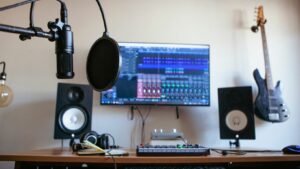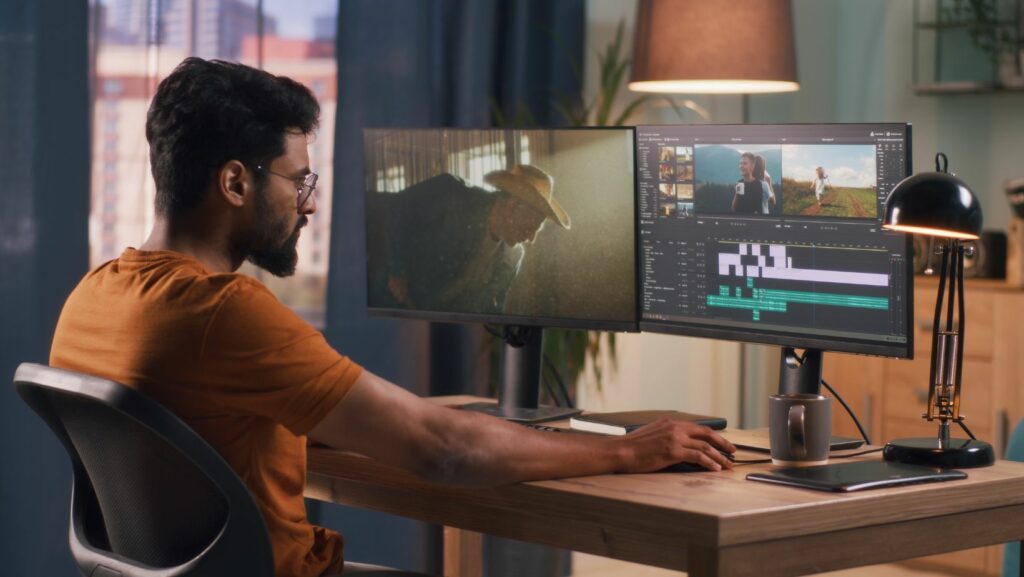In the world of music production, audio mixing stands as a crucial step that can make or break a track. It’s the art of balancing individual elements within a song to create a harmonious and polished final product. Whether it’s a catchy pop tune or an intricate orchestral piece, effective mixing techniques can elevate a composition to new heights, ensuring every note resonates with clarity and impact.
Understanding Audio Mixing

Audio mixing transforms individual audio elements, such as vocals and instruments, into a cohesive track. Effective mixing techniques play a crucial role in bringing out the best qualities of each component. Engineers carefully adjust levels to ensure clarity and avoid distortion. Balancing is crucial when dealing with various frequencies; high and low frequencies must complement rather than overpower each other.
Compression controls dynamic range. This technique maintains consistent volume levels, ensuring softer sounds are audible and louder sounds are not overwhelming. Advanced audio mixing techniques can leverage digital tools and plugins. Digital audio workstations offer expansive libraries and automation features, allowing precision in mixes and enabling new creative possibilities.
Essential Audio Mixing Tools
Effective audio mixing techniques require various tools to enhance sound quality and achieve balance in tracks. These tools cater to different aspects of mixing, providing versatility and precision.
Digital Audio Workstations (DAWs)

Digital Audio Workstations serve as the backbone for modern mixing. They offer a comprehensive platform for recording, editing, and arranging audio. Popular DAWs like Ableton Live and Pro Tools feature robust audio mixing techniques, automation capabilities, and integrated plugins. These software platforms enable seamless manipulation of audio tracks, offering precise control over elements such as EQ and dynamic range.
Mixing Consoles
Mixing consoles remain essential for hands-on control in mixing environments. They provide tactile interfaces with faders and knobs, allowing engineers to intuitively adjust volume levels, EQ, and panning. Consoles range from large studio setups to compact digital models, catering to various needs based on project scale and performance demands. They bridge the gap between analog warmth and digital efficiency, making them valuable in diverse audio mixing scenarios.
Audio Plugins

Plugins extend the functionality of DAWs and consoles, offering targeted solutions for specific audio challenges. These digital tools include compressors, reverb, and modulation effects, each designed to enhance sound clarity and depth. Plugins like Waves and FabFilter provide specialized audio mixing techniques, allowing engineers to tailor soundscapes with precision. With endless creative possibilities, plugins revolutionize sound shaping, from subtle enhancements to bold transformations.
Audio Mixing Techniques
Audio mixing techniques ensure clarity and cohesion in a track by refining individual elements to achieve a balanced blend.
Balancing Levels
Effective balancing of audio levels makes each element audible and synergistic. Engineers adjust volume levels for instruments and vocals to ensure none dominate or get lost. Consistent level adjustments prevent distortion, maintaining a clear mix.
Panning and Stereo Imaging
Panning provides spatial positioning by distributing sounds across the stereo field. Engineers create depth, replicating natural acoustics and enhancing the listening experience. Stereo imaging adds dimension, making the mix dynamic and engaging.
Equalization
Equalization (EQ) fine-tunes frequency ranges, shaping tonal balance and eliminating noise. By boosting or cutting specific frequencies, engineers ensure each element occupies its own space, preventing frequency overlap and achieving clarity.
Audio mixing techniques play a crucial role in music production, yet common mistakes can often undermine a track’s potential. Several pitfalls frequently arise, affecting the final sound quality.
- Overloading Effects: Excessive use of effects can clutter a mix. Reverbs, delays, and other effects, while enhancing elements when applied correctly, can muddy the sound when stacked excessively. It’s essential to use effects strategically to maintain clarity.
- Ignoring Gain Staging: Proper gain staging prevents distortion and maintains optimal audio levels. Without setting correct input and output levels at each stage, components may clip, resulting in an unbalanced mix.
- Inadequate Monitoring: Mixing on poor-quality equipment or in an untreated room can lead to inaccurate representations of sound. Good studio monitors and an acoustically treated space ensure mixes translate well across various systems.
As technology continues to evolve, the potential for innovation in audio mixing grows, offering endless possibilities for creating unique and engaging soundscapes. By avoiding common pitfalls and embracing both foundational and advanced techniques, audio engineers can elevate their craft and produce tracks that resonate with clarity and impact.



